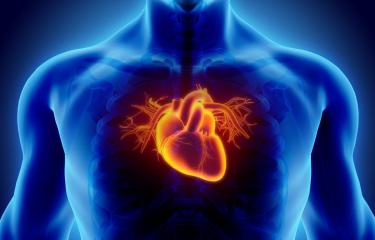Congenital limb defects are very common and occur in 1.5 in 1,000 births. Some are minor, such as a missing finger, while others are more serious, a missing limb for instance. Fundamental biology looks at the buds of developing limbs and how this development may be linked to defects. Limb position is fairly constant within a same species and yet relatively variable in vertebrates. In an article published in Current Biology (Cell Press), scientists from the Institut Pasteur have discovered that the organization of Hox genes (the limb architects) reflects their order of expression and future limb position.
How is limb position determined on the torso during development? Scientists are still asking themselves this question. With the exception of a few species, mammals always have seven cervical vertebrae and the limbs are positioned at the junction between these vertebrae and the thoracic vertebrae.
Very early initiation
Scientists assumed that limb position was determined very early on during development, even before the embryo was visible. They have therefore proved this initiation takes place during gastrulation. Gastrulation is a phase in embryonic development that leads to the formation of three "layers of cells". The outermost layer forms the future nervous system and skin, the intermediate layer forms the bones and muscles, and the innermost layer forms most of the organs. Gastrulation therefore enables the anterior-posterior axis (from top to bottom) to be positioned around a "primitive streak" that will form the future torso.
"Many studies have suggested that the Hox gene family, known as the 'architect' gene family, has a role to play in initiating limb position" explains Jérôme Gros, Head of the Morphogenesis Regulation in Higher Vertebrates five-year group at the Institut Pasteur. The first step was therefore to prove that Hox genes are already organized into "areas" that indicate limb initiation at the end of gastrulation, when the embryo is still very small and only features traces of organs.
A relationship between time and space
The scientists then explored the gradual phenomenon of limb formation. It had already been proven that Hox genes show temporal collinearity. Collinearity is how the organization of genes in the chromosome reflects their order of expression over time. By studying the embryos of three birds (finch, chicken and ostrich), the scientists observed that the genes took much less time to express themselves in finches for example, because they have fewer cervical vertebrae than ostriches.
But above all, the scientists were able to prove that temporal collinearity was linked to another phenomenon – spatial collinearity, i.e. in addition to reflecting their order of expression, the organization of genes also reflects the future position of limbs. As the genes are transcribed, the limbs are therefore positioned while the anterior-posterior axis is being formed. "However, no positioning defects were found along the axis in people presenting with limb defects" adds Jérôme Gros. The scientists therefore suggest that as these defects are linked to very early stages, they are not viable and lead to the degeneration of the embryo.
Source
Timed Collinear Activation of Hox Genes during Gastrulation Controls the Avian Forelimb Position, Current Biology, January 7, 2019
ChloeMoreau1,2,3,Paolo Caldarelli1,2,3, Didier Rocancourt1,2,Julian Roussel1,2,6, Nicolas Denans4, Olivier Pourquie5, Jérôme Gros1,2
1 Department of Developmental and Stem Cell Biology, Institut Pasteur, 25 rue du Docteur Roux, Paris, France
2 CNRS UMR3738, 25 rue du Dr Roux, Paris, France
3 Sorbonne Université, Cellule Pasteur UPMC, rue du Dr Roux, Paris, France
4 Stowers Institute for Medical Research, Kansas City, USA
5 Department of Genetics, Harvard Medical School and Department of Pathology, Brigham and Women’s Hospital, 60 Fenwood Road, Boston, USA
6 Institut du Cerveau et de la Moelle épinière (ICM), 75005 Paris, France





